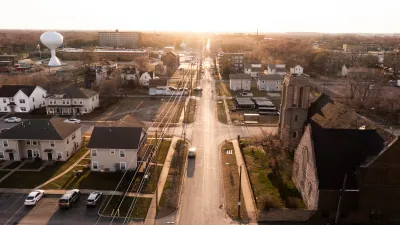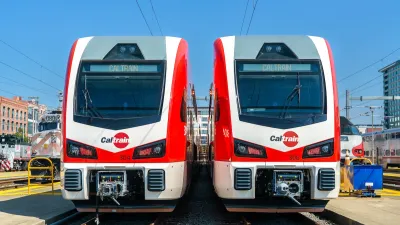Forget reducing congestion and improving the environment; a new paper makes perhaps the strongest argument yet for investing in public transit based on its ability to agglomerate, or cluster people together, raising wages and productivity.
"In a new paper set for publication in Urban Studies, [Daniel] Chatman [of the University of California at Berkeley] and fellow planner Robert Noland of Rutgers University use concrete numbers to make the case that transit produces agglomeration," writes Eric Jaffe. "They report that this hidden economic value of transit could be worth anywhere from $1.5 million to $1.8 billion a year, depending on the size of the city. And the bigger the city, they find, the bigger the agglomeration benefit of expanding transit."
"Simply put, city officials now have a much stronger argument for using taxpayer money to improve their public transportation service," he adds. "If showing that system expansion leads to more riders and less congestion is good, and showing that it reduces pollution and improves public safety is great, then showing in big numbers how much economic growth will occur should be gold."
FULL STORY: Public Transit Is Worth Way More to a City Than You Think

Manufactured Crisis: Losing the Nation’s Largest Source of Unsubsidized Affordable Housing
Manufactured housing communities have long been an affordable housing option for millions of people living in the U.S., but that affordability is disappearing rapidly. How did we get here?

Americans May Be Stuck — But Why?
Americans are moving a lot less than they once did, and that is a problem. While Yoni Applebaum, in his highly-publicized article Stuck, gets the reasons badly wrong, it's still important to ask: why are we moving so much less than before?

Using Old Oil and Gas Wells for Green Energy Storage
Penn State researchers have found that repurposing abandoned oil and gas wells for geothermal-assisted compressed-air energy storage can boost efficiency, reduce environmental risks, and support clean energy and job transitions.

Greening Oakland’s School Grounds
With help from community partners like the Trust for Public Land, Oakland Unified School District is turning barren, asphalt-covered schoolyards into vibrant, green spaces that support outdoor learning, play, and student well-being.

California Governor Suspends CEQA Reviews for Utilities in Fire Areas
Utility restoration efforts in areas affected by the January wildfires in Los Angeles will be exempt from environmental regulations to speed up the rebuilding of essential infrastructure.

Native American Communities Prepare to Lead on Environmental Stewardship
In the face of federal threats to public lands and conservation efforts, indigenous groups continue to model nature-centered conservation efforts.
Urban Design for Planners 1: Software Tools
This six-course series explores essential urban design concepts using open source software and equips planners with the tools they need to participate fully in the urban design process.
Planning for Universal Design
Learn the tools for implementing Universal Design in planning regulations.
Heyer Gruel & Associates PA
City of Moreno Valley
Institute for Housing and Urban Development Studies (IHS)
City of Grandview
Harvard GSD Executive Education
Salt Lake City
NYU Wagner Graduate School of Public Service
City of Cambridge, Maryland





























